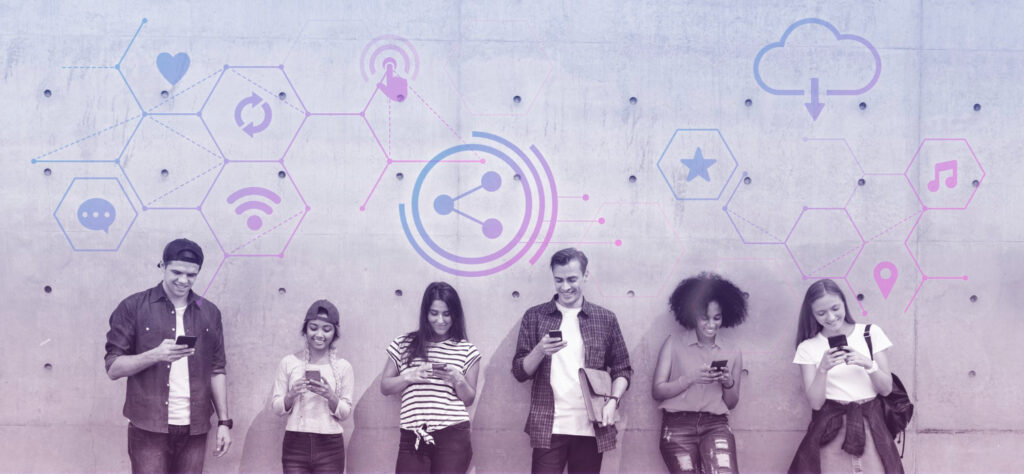Personalization is no longer a trend: it is a requirement. In an environment where consumers are more aware, selective and demanding than ever, connecting with them requires more than just good products or eye-catching campaigns. It requires speaking to them directly, in the right channel, at the right time, and with a message that resonates with your context, interests and real needs.
Through personalization and smart audience building, brands can build stronger relationships, increase conversion and generate long-term loyalty. This approach not only improves marketing results, but optimizes investment by targeting only those who really matter.
Why personalization is key to audience building
Consumer behavior has changed radically in recent years. Today, users:
- They become more informed before making decisions.
- They compare offers, research and evaluate the experiences of others.
- They reject generic or intrusive messages.
- They expect brands to know them and speak directly to them.
This rejection of generic marketing has driven a profound transformation: we move from mass communication to personalized experiences. Consumers are looking for more human connections, messages adapted to their reality and brands that understand their context.
In this new paradigm, marketing ceases to be unidirectional and becomes a contextual and emotional conversation. Brands that understand this and act accordingly, manage to differentiate themselves in increasingly saturated markets.
▶ You may be interested in: Audience profiling: keys to digital marketing
From basic segmentation to hyper-personalized marketing

For years, segmentation was sufficient to reach more relevant audiences. Dividing by age, gender, location or socioeconomic level allowed for a certain level of personalization. But today, that is no longer enough.
The micro-segmentation has taken over, allowing the creation of much more specific user groups, not only by demographics, but also by:
- Navigation behaviors
- Previous interactions with the brand
- Interests and affinities
- Customer Life Cycle Moments
- Contextual variables such as weather, real-time location, or devices used
Personalization is not using the customer's name in an email. It is to adapt the content, tone, offer and channel to the individual profile of each user. This requires data, artificial intelligence and automation processes.
Today, audiences are no longer built on assumptions, but on the basis of real behaviors, digital signals and local context. It is the logical evolution of smart marketing.
▶ You may be interested in: Audience localization: strategies and benefits
Key tools for building customized audiences
To achieve a real level of customization, it takes more than good intentions: it takes technological infrastructure and relevant data. These are the essential tools for building audiences hyper-relevant:
CRM with artificial intelligence
Relationship management systems (CRM) allow you to store information about each customer and automate interactions. By integrating them with AI, personalized recommendations can be generated, behavior can be predicted or communication can be adapted in real time.
2. Data Management Platforms (DMP)
A Customer Data Platform unifies all customer information in a single source, crossing online and offline data, transactions, navigation, interactions and much more.
3. Advertising platforms with predictive audiences
Tools such as Meta Ads, Google Ads o LinkedIn allow you to create lookalike audiences, based on behavioral patterns, and even anticipate purchase intentions.
4. Google Analytics 4 and event targeting
GA4 allows you to create advanced audiences based on specific events, traffic sources, behavioral sequences or engagement. It is essential for data-driven strategies.
5. Machine learning and clustering models
Brands that integrate clustering algorithms (grouping of similar users) or supervised learning, manage to discover hidden niches and emerging behaviors.
6. Telco and census data integration
One of the most powerful sources for enriching audiences is to combine mobile navigation and census dataThe new system allows to understand human behavior on a large scale, with total anonymity and legal compliance.
How enigmia transforms data into hyper-relevant audiences
At ENIGMIA we take audience building to the next level. We don't rely on intuition or assumptions: we work with real, massive and accurate dataprocessed with artificial intelligence models and designed to act.
This is how we do it:
- We combine unique data sourcesThe following are just a few examples: mobile lines, connected households, census data and millions of anonymous surfing signals every day.
- We identify behavioral patterns in real timeWe segment by affinity, by intent or by geographic and social variables.
- We create dynamic audiences that constantly adapt according to the user's actions.
- Integrate with any advertising or CRM platformby bringing insights into action without friction.
Discover ENIGMIA to create high-value audiences with real-time AI.
¡Request a demo!
Common errors when trying to customize without data
Many attempts at personalization fail because they are not supported by real data. Here are the most common mistakes:
- Send campaigns without knowing to whom they are addressed: shooting blind is not only inefficient, it also erodes user confidence.
- Based on age or location alone: the user's reality is more complex and multidimensional.
- Use generic language without context: messages must speak the emotional and cultural language of the target audience.
- Do not use intelligent automation: manually customizing does not scale. Today's tools allow you to do this automatically and accurately.
- Ignore real-time data value: interests change, moments matter. Personalizing with old data is as useless as not personalizing.
Authentic connection starts from deep understanding
Brands that truly connect with their customers do so because they understand their contexts, their motivations and their behavior in real time. Personalization is not a technique, it is a philosophy: that of putting the user at the center, listening before speaking and acting intelligently.
The tools exist. So does the data. The difference is made by who knows how to use them with criteria and strategy.
In an environment where everyone competes for attention, The winner will be the one who knows how to offer relevant content, at the right time, to the right person.
And for that, you need real personalization, dynamic audiences and a technology partner like ENIGMIA.




